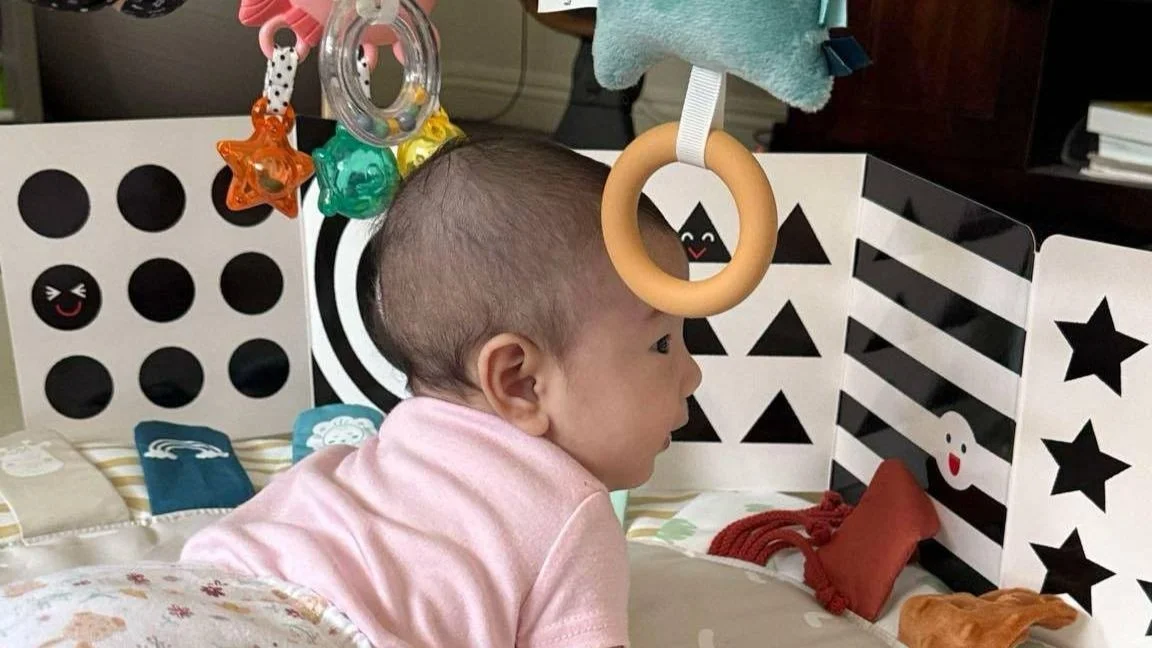Raising Calm Minds, Part 1: Cultivating Calmness in Children Ages 0–2
“Calmness begins not in the mind, but in the nervous system.”
Before children can say a word, hold a crayon, or tie their shoes, their brains and bodies are already forming patterns—emotional, physical, and relational. The first two years of life are foundational. During this time, a child’s ability to stay calm, handle stress, and feel safe is not taught through words, but absorbed through experience.
In these early months and years, children don’t self-regulate. They co-regulate—meaning they borrow calm from the adults around them. The more often a baby experiences calm responses, the more their brain learns what calm feels like and how to return to it in the future.
Let’s dive into how to actively cultivate calmness in infants and toddlers.
What’s Going on in the 0–2 Brain?
The brain is building millions of neural connections per second.
Emotional regulation systems (especially in the limbic brain) are under construction.
Infants and toddlers are fully dependent on others to help them regulate stress and emotions.
Repetitive experiences of safety and calm help build secure attachment—the foundation for emotional health.
Calming Techniques for Infants and Toddlers (0–2 Years)
1. The Power of Predictable Routines
Babies and toddlers thrive on routine. When their environment is predictable, their nervous system relaxes.
Create consistent wake/sleep/eat patterns
Use songs for transitions (e.g., clean-up time, nap time)
Keep lighting and noise low and predictable before bed or after overstimulation
2. Skin-to-Skin Contact
Known to regulate breathing, heart rate, and body temperature, this simple technique is also powerful for emotional connection.
Hold your baby against your chest during distress, naps, or bonding time
Use warm skin-to-skin moments even with toddlers who are upset
3. Deep, Slow Breathing (for You!)
Children this age cannot follow breathing exercises, but they feel your breath rhythm. Slow your breathing when they’re upset.
Inhale for 4, exhale for 6, while holding your baby
Say softly, “You’re safe. I’m here. Breathe with me,” even if they don’t understand the words
4. Soothing Sensory Tools
The senses are the gateway to calmness at this age. Use intentional sensory input to help them regulate.
Sight: dim lighting, soft mobiles, or slow-moving ceiling projections
Touch: soft textures, baby massage, warm baths
Sound: white noise, heartbeat sounds, gentle lullabies
Movement: rocking, slow bouncing, rhythmic walking
5. Responsive Holding & Eye Contact
Hold your baby when they cry. Look at them when you speak softly. These small, repeated gestures send the message: You’re safe. You matter.
Use front carriers to keep your baby close and secure during everyday tasks
For toddlers, get down to their level, meet their eyes, and match your tone to their emotional need
6. Name and Reflect Emotions (Even If They Don’t Understand Yet)
This practice builds the emotional literacy of calmness over time.
Say things like: “You’re sad. Mama’s here.” / “That was loud! It surprised you.”
This validates their internal experience and begins laying the foundation for future self-regulation
7. The "Pause and Hold" Technique
When your toddler is having a meltdown, pause your movement, ground yourself, and gently hold them with stillness.
Whisper calmly: “Let’s be still.”
Avoid too much talking, which can overstimulate—your calm presence is more effective than reasoning
8. Nature and Outdoor Time
Even babies benefit from the calming effects of nature.
Sit under a tree with your baby and let them watch leaves move
Let toddlers walk barefoot on grass or sand for grounding
Caregiver Calmness is the Secret Ingredient
You can’t pour calm into a child from an empty cup. Your nervous system is their teacher.
Regulate yourself first:
Check your posture and breath
If you’re overwhelmed, step away safely for a few moments
Use calming affirmations: “My calm helps them calm.” / “We’re okay right now.”
Children from birth to two are like sponges—absorbing far more than we realize. When we give them consistent, calm experiences, we’re not just comforting them in the moment. We’re wiring their brain for resilience, emotional health, and positive behaviors for years to come.
Calmness in a child doesn’t start with the child. It begins with the adults who create their world.

